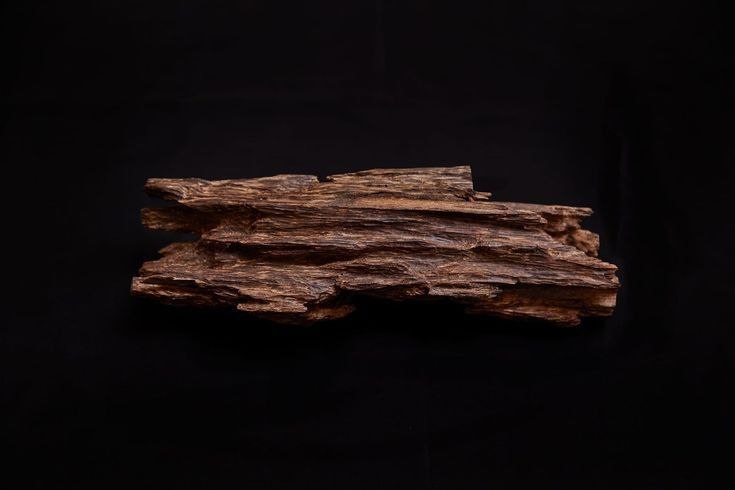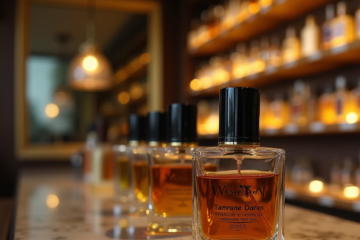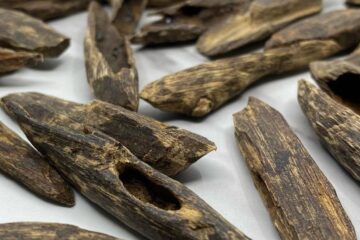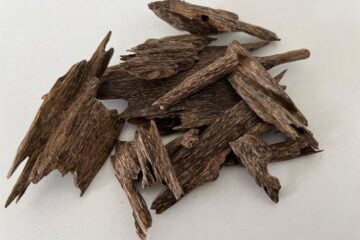
Historical and Cultural Aspects
Chinese agarwood, known as «chenxiang» or «沉香,» has a profound and ancient history that is deeply intertwined with Chinese culture, medicine, and spirituality. The use of agarwood in China dates back centuries, with significant mentions in ancient texts and religious scriptures.
In Chinese culture, agarwood was highly valued for its aromatic properties and its perceived spiritual and medicinal benefits. According to Taoist beliefs, the extraction of a plant’s fragrance was thought to liberate the plant’s soul, mirroring the transmutation from a physical to a spiritual state.
Agarwood has strong ties to Buddhism in China, with historical records showing its use as early as the 3rd century. Buddhist monks would use agarwood in various forms, including burning it as incense to infuse their homes with its intoxicating smell. High-ranking Buddhist monks were distinguishable by their beaded necklaces made from agarwood, which were believed to have healing properties when crushed and mixed with water.
In traditional Chinese medicine, agarwood is described in the «Shennong Ben Cao Jing» (Divine Farmer’s Materia Medica Classic) as a potent medicinal substance capable of relieving pain, calming the mind, and treating digestive disorders. It was used to aid in digestion, increase circulation, reduce fever, and alleviate rheumatism.
Geographic Locations and Forests
The most important regions for Chinese agarwood production are in the southwestern parts of China. These include:
– Yunnan: Yunnan province remains China´s most significant producer of agarwood, with various degrees of quality and quantity.
– Guangxi: Known for its high-quality agarwood, Guangxi is another key region.
– Hubei: This province also contributes to agarwood production, although to a lesser extent than Yunnan and Guangxi.
– Hunan: Hunan Province rounds out the list of significant agarwood-producing areas.

Uses of Chinese Agarwood
Agarwood in China has been utilized in several distinctive ways:
– Incense and Rituals: It is primarily used by burning agarwood as a form of incense, which is integral to many religious and cultural traditions. This practice was common among noble families, who would host incense appreciation parties that were as popular as modern-day karaoke gatherings.

– Traditional Medicine: Agarwood has been a part of traditional Chinese medicine for centuries, treating a wide range of symptoms and diseases, including digestive issues, fever, and rheumatism.
– Coffins for the Elite: Historically, agarwood was used to create coffins for the incredibly wealthy or revered members of Chinese society, such as the legendary war general Guan Yu. This practice symbolized great honor and respect.
– Buddhist Practices: In Buddhism, agarwood beads are used in necklaces worn by high-ranking monks. These beads are believed to have healing properties and are used to cure diseases and ailments.
Markets and Companies
The demand for Chinese agarwood is driven by both domestic and international markets.
– Domestic Markets: In China, agarwood is sold in luxury stores and traditional medicine shops. Companies like Shanghai Jahwa, which absorbed the Liushen company known for its Shuang Mei scent, play a significant role in the agarwood market. Local brands that produce luxury perfumes using agarwood are also popular among wealthy Chinese consumers, who value these products more for their prestige than their fragrance.
– International Companies: The global market for agarwood is substantial, with companies from the Middle East, India, and Southeast Asia actively involved. Vietnamese companies, such as Binh Nghia Agarwood, are prominent in the cultivation and exploitation of agarwood, catering to international demand. The agarwood trade has historical roots, with accounts of international trade dating back to the thirteenth century, involving countries like India, China, and Japan
Cultural Significance and Modern Usage
In modern times, Chinese agarwood remains a highly sought-after luxury item. The cultural significance of agarwood is reflected in its continued use in traditional medicine, and Buddhist rituals and as a symbol of wealth and luxury.
– Incense Culture: The popularity of incense in China was much stronger in the past than it is today. However, the practice of using agarwood as incense continues, especially in religious and cultural contexts. Fashion-conscious individuals and noble families would often infuse their clothes with incense, a practice that was once as common as wearing perfumes today.
– Luxury and Prestige: Agarwood’s rarity and high cost make it a symbol of luxury and prestige. It is often used in special occasions and as a luxury gift. The prices of agarwood products are astronomical, driven by the wood’s rarity and the prestige associated with its use.
Chinese Oud
China is one of the countries where Chinese agarwood forests are widespread, particularly in the southwest. Here, agarwood is used as incense in many religious and cultural traditions and rituals. The Chinese seek large, rare pieces to carve into statues and specific shapes, often presented as luxury gifts.
The most important areas for the spread of Chinese oud include Yunnan, Guangxi, Hubei, and Hunan. Yunnan Province remains the most important producer of agarwood in various degrees. This region’s agarwood is highly valued for its quality and is a cornerstone of China’s agarwood industry.

In conclusion, Chinese agarwood is a treasure that embodies the rich cultural, historical, and medicinal heritage of China. Its significance extends beyond its aromatic properties to include its role in traditional medicine, Buddhist rituals, and as a luxury item. As the demand for this rare and precious wood continues, it remains a vital part of China’s cultural identity and a significant player in the global luxury goods market.



